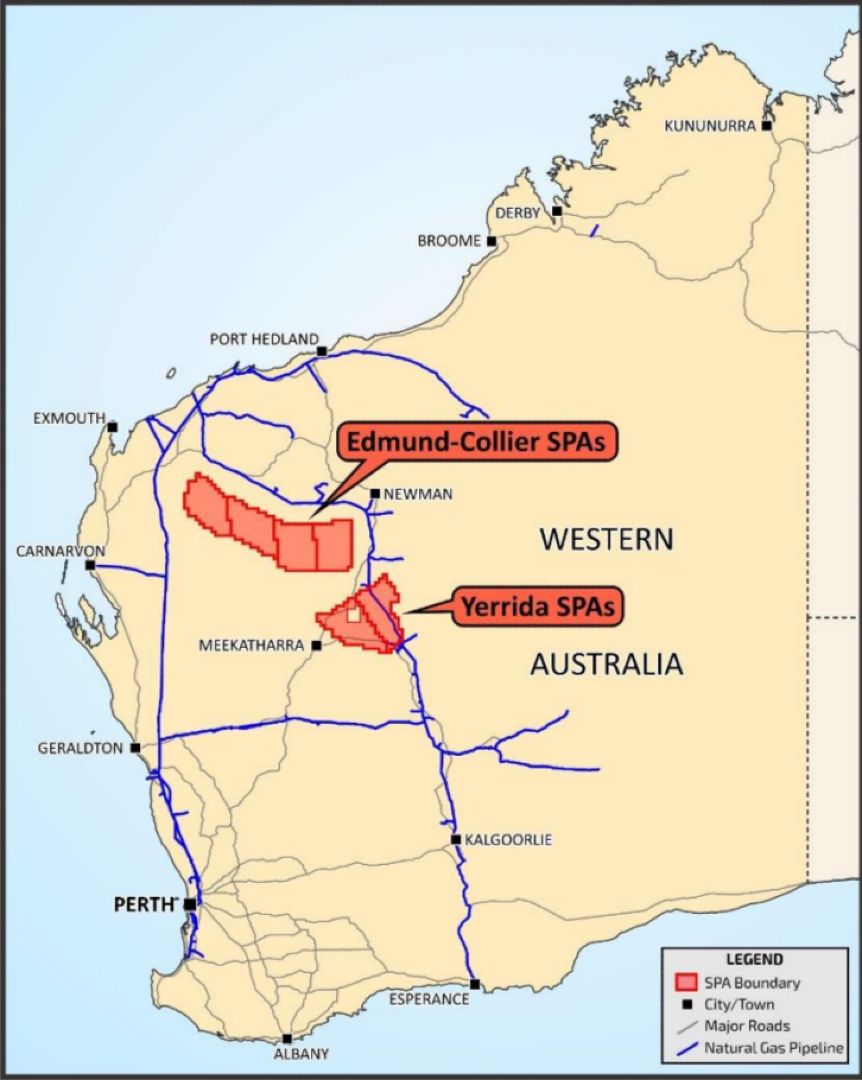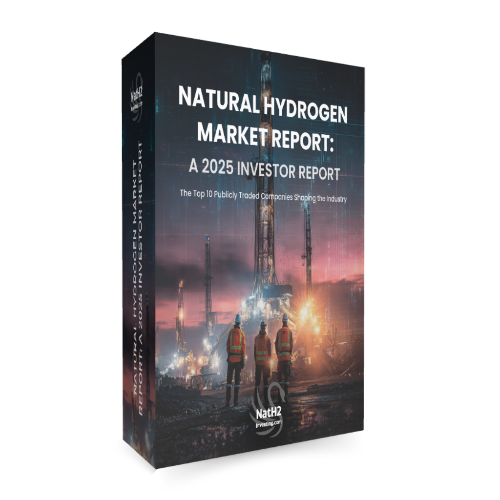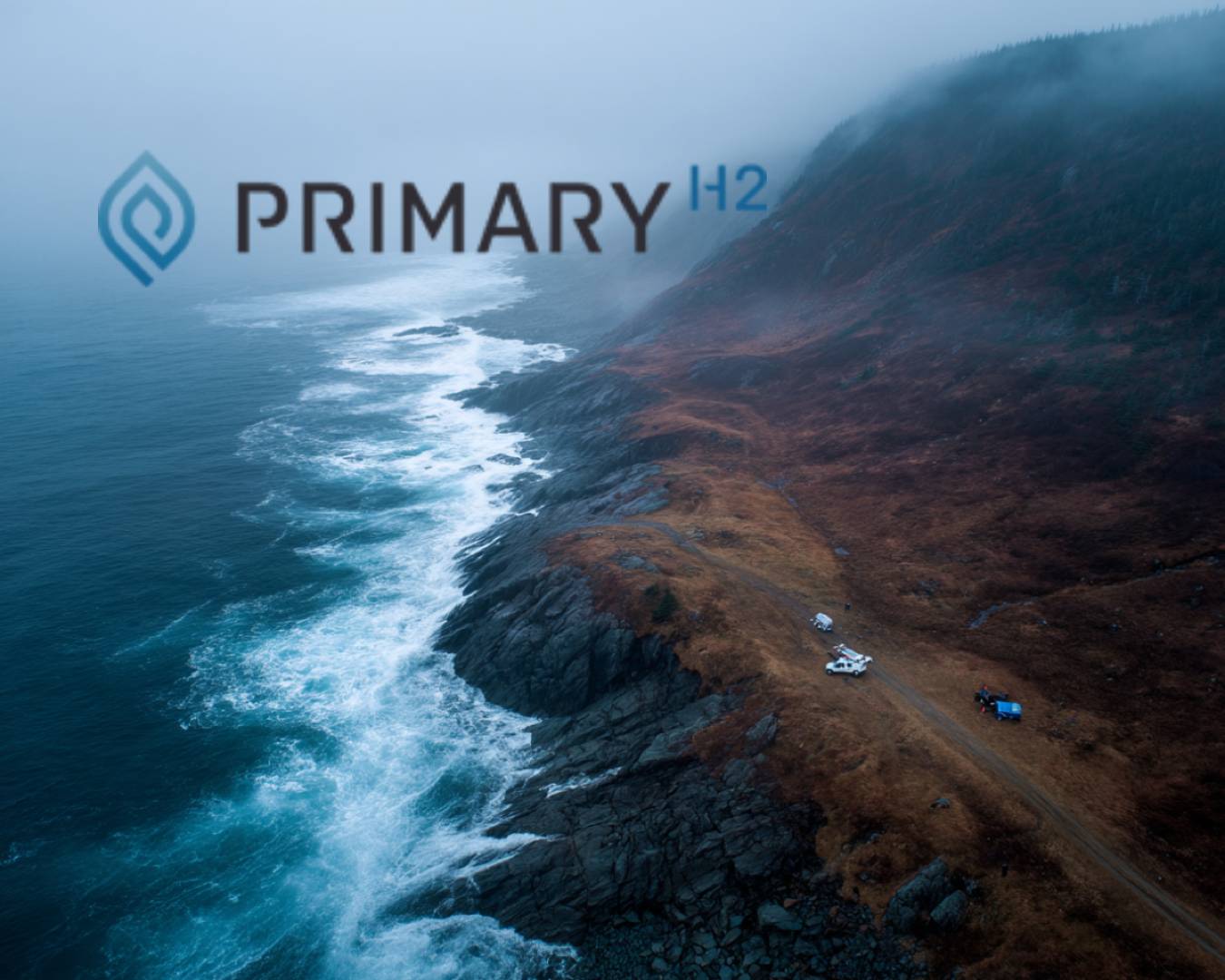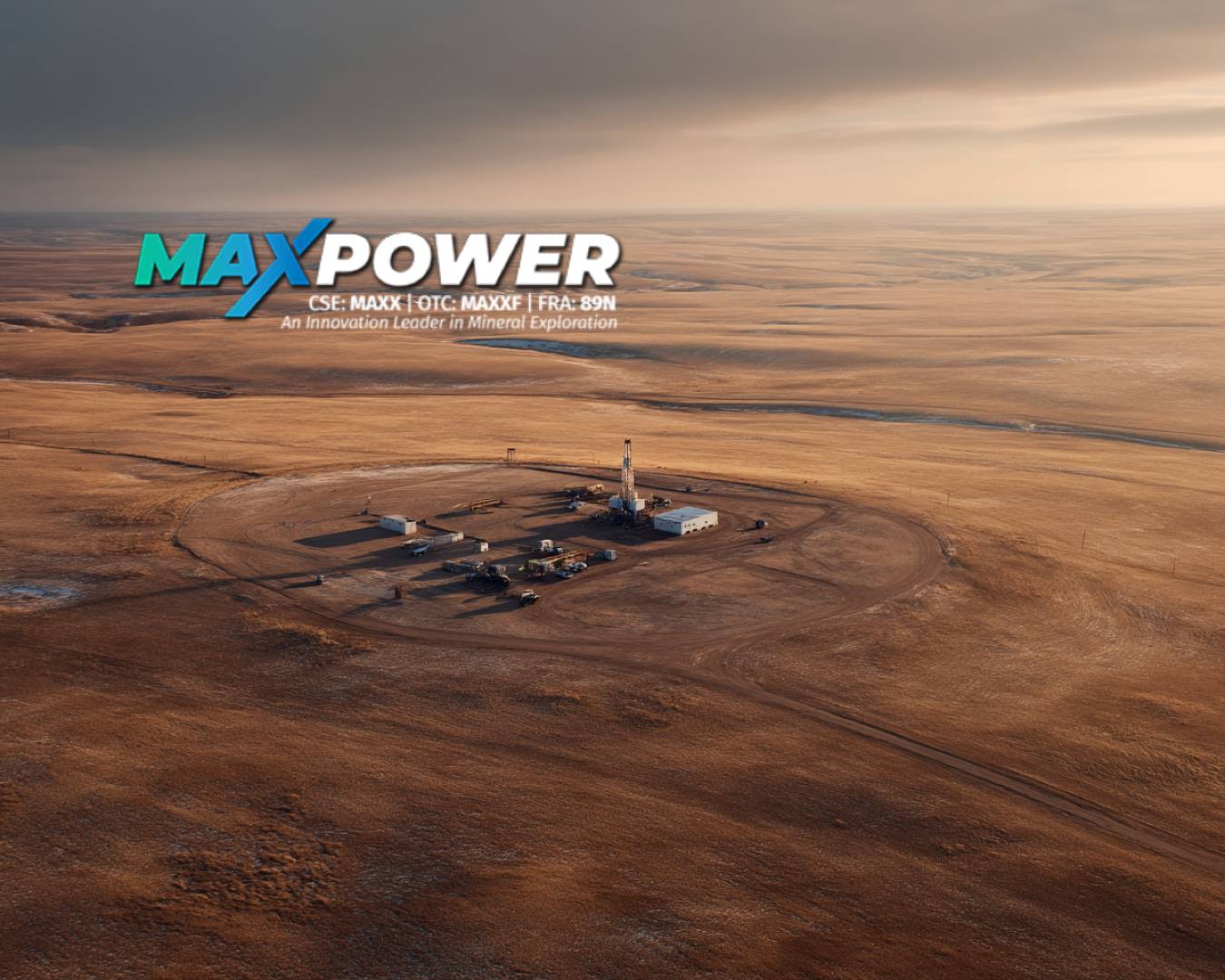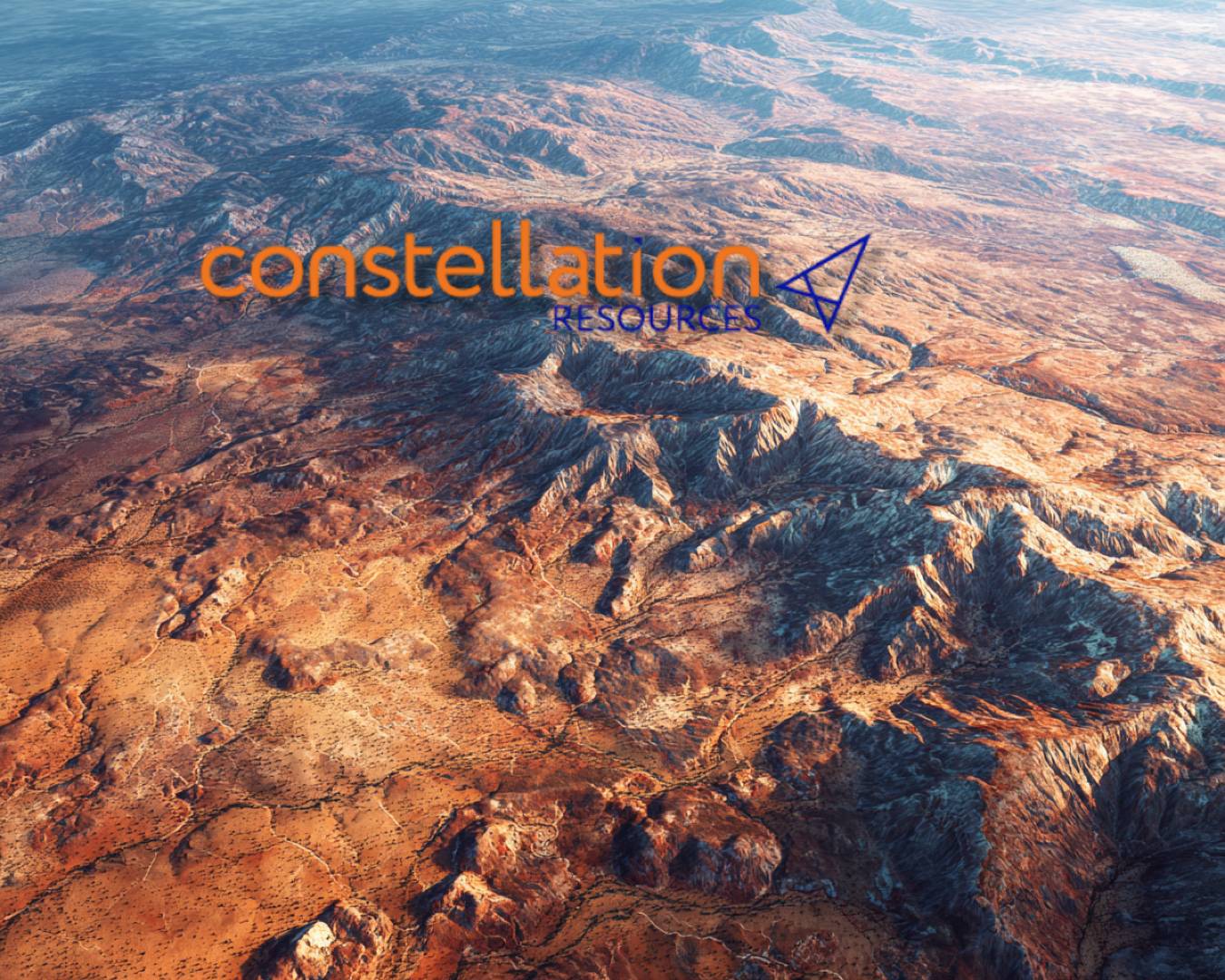
Constellation Resources Confirms Hydrogen and Helium Generation at Edmund-Collier Project — CSIRO Study Validates Basin-Scale Potential
Perth, Western Australia – October 13, 2025 – Constellation Resources Limited (ASX: CR1) has announced confirmed evidence of hydrogen and helium within its Edmund-Collier Natural Hydrogen Project in Western Australia, following detailed laboratory testing conducted by the Commonwealth Scientific and Industrial Research Organisation (CSIRO).
The CSIRO analyses of crushed rock and fluid inclusions from historic diamond drillholes revealed the presence of hydrogen, helium, and hydrocarbon gases (methane and ethane) across multiple intervals, confirming both generation and migration of these gases within the Edmund-Collier Basin.
These findings mark the first confirmed detection of hydrogen and helium across a large, underexplored basin in Western Australia. Importantly, helium was detected near the Talga Fault, a major structural feature interpreted as a basement-tapping conduit for migrating gases.
Constellation’s results highlight the Wanna Syncline as a major target for subsurface hydrogen and helium accumulation, with interpreted seals and source rocks indicating long-term gas preservation.
The company’s 87,602 km² Western Australian hydrogen portfolio represents one of the largest natural hydrogen exploration holdings in the country, with work underway to refine drill targets, expand surface-gas sampling, and advance seismic interpretation programs.
Full press release is attached:
Constellation Resources Limited (the “Company” or “Constellation”) is pleased to advise preliminary results from testing conducted by the Commonwealth Scientific and Industrial Research Organisation (“CSIRO”) on crushed rock and fluid inclusion analysis across its Edmund-Collier Natural Hydrogen (“NatH2”) Project (“Edmund-Collier”).
The Company’s wider Western Australian NatH2 land portfolio spans 87,602km2 across three sedimentary basins, strategically located within proximity to gas pipelines and existing major mining producers. Edmund-Collier represents a first-of-its-kind opportunity in Western Australia to explore for natural hydrogen and helium across a large, underexplored basin, with no prior deep drilling to date.
HIGHLIGHTS
• CSIRO studies to determine the composition of trapped gases within crushed rock and fluid inclusions from historic mineral exploration diamond drillholes at Edmund-Collier have established evidence for the generation and migration of hydrogen, helium and associated gases.
• All drillholes sampled detected the presence of either hydrogen, helium or hydrocarbon gases (methane and/or ethane).
• Importantly, helium has been detected in a sandstone drillhole sample located near the Talga Fault which is one of two basement tapping faults that extend along the north and south boundaries of the Wanna Syncline.
• Wanna Syncline interpreted to have preserved traps and source-rocks sufficiently buried, with overlying seals, for hydrogen and associated gases to be either retained within shales or within overlying reservoirs. Figure 1: Edmund-Collier conceptual hydrogen system and reprocessed seismic line displaying anomalous crushed rock analyses from drillholes containing hydrogen, helium and natural gas (methane).
CSIRO - CRUSHED ROCK AND FLUID INCLUSION STUDIES AT EDMUND-COLLIER
The Company sampled a number of diamond holes that were publicly available from several of the deeper exploration holes previously drilled by mineral explorers within the Edmund-Collier. Analysis by the CSIRO on these drillholes has confirmed a suite of gases trapped within the pores and/or in fluid inclusions, including either hydrogen, helium or natural gases (methane and/or ethane) that were detected in nearly all the submitted diamond core samples, (Figure 1 & 2). The Company’s thesis derived from results to date, is that Edmund-Collier represents a first-of-its-kind opportunity in Western Australia to explore for natural hydrogen and helium across a large, underexplored basin, with no prior deep drilling to date.
The Company is highly encouraged by the results which support the development of:
• the detection of hydrogen, helium and associated gases in multiple intervals is evidence that these gases have potentially both been generated and migrated from the basement and within the basin (Figure 3); and
• the co-existence of hydrogen, helium, methane, carbon dioxide and ethane is a possible indication of a common genetic origin tied to the thermal maturation of organic-rich shales, potentially within the Blue Billy and Discovery Formations.
Figure 2: Summary of CSIRO bulk rock crushing analysis within the Edmund-Collier.
The footprints of the organic-rich Blue Billy and Discovery Formations within the Edmund-Collier are extensive. The results from the current CSIRO studies, underpin the generating potential for targeted gases from these organic-rich formations. The detection of helium, either by the decay of radiometric rich rocks and/or from deep primordial sources, further broaden the exploration potential of the basin.
The results are highly encouraging given the selected samples are all derived from drillholes targeting base-metal mineralisation and are located on the shallow outer edges of the prospective Wanna Syncline target. The outer basin edges have been extremely useful for obtaining geological evidence of potential generation of gases.
The Wanna Syncline is an extensive large-scale (300km x 40km x 4.5km) target for both basement-derived hydrogen and helium and basin-derived thermogenic hydrogen and associated gases. Target zones are deep, potentially overpressured and exhibit extensive dolerite sills that could provide seals for gas preservation. The Wanna Syncline is a prime target for further seismic acquisition and drilling in zones proximal to basement tapping faults and in traps within the syncline itself. Neither of these target plays have been previously drill tested. Figure 3: Results of CSIRO molecular gas composition bulk rock crushing over multiple intervals throughout 17BBDD002, implying migration of gases throughout the stratigraphic column.
Molecular gas composition analyses by bulk rock crushing were conducted by CSIRO on 23 core samples that were obtained from seven diamond drillholes. To liberate, extract and analyse the trapped gases within these core intervals, the samples were crushed and processed within a gas-tight modified stainless-steel crusher along with blank corrections. In-situ Raman spectroscopic analysis of fluid inclusions was performed on 14 core samples from seven drillholes, primarily targeting secondary veins within a shale host. The Horiba LabRam HR Evolution Raman Spectrometer was used to identify the types of gases trapped in these inclusions. Based on the spectrometer’s selected range, the gases analysed included hydrogen, oxygen, carbon dioxide, methane, and nitrogen. Helium and ethane were excluded due to molecular characteristics and limitations of the analytical technique.
CURRENT AND FUTURE WORK PLANS
The key aim for work programs underway within the Company’s wider Western Australian NatH2 land portfolio which spans 87,602km2 is to confirm prospectivity and to define drill targets. The company has been rewarded preferred candidate status for nine Special Prospecting Authority -Acreage Option “SPA-AO” permits by the Department of Mines, Petroleum and Exploration. The tenure instruments in place allows the Company to undertake low-cost – high-value work programs. To date these programs include the reprocessing of a historic seismic line, reviews of Geological Survey of Western Australia (GSWA) mapping and open file WAMEX reports, sampling of publicly available diamond core for thermal maturity and total organic carbon analysis and important studies with Australia’s leading research organisation, the CSIRO.
The results from these work streams are continuously supporting and underpinning the prospectivity of the Company’s basin-scale projects for natural hydrogen and associated gases including developing emerging quality drill targets across the Edmund-Collier Project. The Company is also well advanced to undertake surface-gas sampling programs from old drill collars and soils to further refine prospective areas.
EMERGING DRILL TARGETS
The Wanna Syncline is interpreted to contain traps and source-rocks sufficiently buried (with overlying seals) for hydrogen and associated gases, either retained within shales or in overlying reservoirs. Work is continuing to determine which exploration methods will best define drill targets in the area.
Located on the western most portion of the Pingandy Shelf in SPA-STP-116, a folded, breached antiformal sequence containing bituminous sandstones up to 60m thick within the Blue Billy Formation was intersected by several 1990s Rio Tinto mineral exploration drillholes (WAMEX Report A54569), and was mapped in outcrop by GSWA. These observations support the thesis that a significant volume of hydrocarbons may have migrated into the sandstone from underlying organic-rich shales of the Blue Billy Formation or from source-rocks within the adjoining Wanna Syncline.
Based on maturity analysis completed to date, the Blue Billy Formation is overmature and has at some stage has been within hydrogen generation window. The mapped bituminous sandstones are located ~40 kilometres west of seismic line GA 10- CP2 (Figure 2).
Based on the reprocessed seismic line, a possible equivalent of this antiformal trap, (which has not been breached) is located alongside the Talga Fault corridor adjoining the Wanna Syncline. Given the promising analyses of hydrogen, methane and helium within drillholes (E44/0051 and 17BBDD002) located on or near the seismic section, this zone is an attractive shallow drill target. A shallow drillhole into this target will assist in testing the potential of this target and provide important information that can be applied to the entire Edmund-Collier.
EDMUND-COLLIER NATURAL HYDROGEN PROJECT BACKGROUND
The Edmund-Collier Project is in the Gascoyne Province of Western Australia. The four contiguous SPA-AOs 37,288km2) are bordered to the north, east and west by gas transmission pipelines. The Edmund Fold Belt is largely outcropping and contains a well-documented folded succession of up to 4-5km thick Proterozoic clastics, carbonates and dolerite sills, with associated deeply penetrating fault systems that cap radiogenic Proterozoic basement providing the elements needed for a total hydrogen system with possible reservoirs, seals, migration pathways and traps identified.
Potential sources for hydrogen include thermogenic hydrogen from organic-rich shales, gases generated from heat-producing radiogenic Paleoproterozoic granites (Durlacher and Moorarie Supersuites) by the hydrolysis of groundwater, and from primordial degassing. Helium generation is from the extremely long-lived radiogenic decay of uranium and thorium in these radiogenic granites and potentially also from some sedimentary rocks.
A significant opportunity in the Edmund–Collier Project is the development of multiple and long-lived traps for gas accumulations, including anticlinal and structural traps, stratigraphic depositional pinch outs and diagenetic traps, and density driven hydrologic traps. These prospective fold-closures at surface can be extrapolated in the subsurface in various geophysical interpretations. Importantly, widespread anticline development since c. 1171 Ma and voluminous dolerite intrusions have provided traps for the potential accumulation of ongoing hydrogen and helium gases for at least one billion years.
For further information, please contact:
Peter Woodman Managing Director Tel: +61 8 9322 6322
Peter Muccilli Technical Director Tel: +61 8 9322 6322
COMPETENT PERSONS STATEMENT
The information in this announcement that relates to Exploration Results is based on information reviewed by Mr Peter Muccilli, a Competent Person who is a Member of the Australian Institute of Mining and Metallurgy. Mr Muccilli is the Technical Director for Constellation Resources Limited and a holder of shares and incentive options in Constellation Resources. Mr Muccilli has sufficient experience that is relevant to the styles of mineralisation and types of deposit under consideration, and to the activity being undertaken, to qualify as a Competent Person as defined in the 2012 Edition of the “Australasian Code for Reporting of Exploration Results, Mineral Resources and Ore Reserves” (JORC Code). Mr Muccilli consents to the inclusion in the announcement of the matters based on his information in the form and context in which it appears. The information in this report that relates to Exploration Results is extracted from the Company’s ASX announcement dated 3 July 2025 and 19 May 2025 which are available to view at the Company’s website on www.constellationresources.com.au. The information in the original ASX Announcements that related to Exploration Results was based on, and fairly represents information compiled by Peter Muccilli, a Competent Person who is a Member of the Australasian Institute of Mining and Metallurgy. Mr Muccilli is a Technical Director of Constellation Resources Limited and a holder of shares and options in Constellation Resources Limited. Mr Muccilli has sufficient experience that is relevant to the styles of mineralisation and types of deposit under consideration, and to the activity being undertaken, to qualify as a Competent Person as defined in the 2012 Edition of the “Australasian Code for Reporting of Exploration Results, Mineral Resources and Ore Reserves” (JORC Code). The Company confirms that it is not aware of any information or data that materially affects the information included in the original market announcement. The Company confirms that the form and context in which the Competent Person’s findings are presented have not been materially modified from the original market announcements.
FORWARD LOOKING STATEMENTS
Statements regarding plans with respect to Constellation’s projects are forward-looking statements. There can be no assurance that the Company’s plans for development of its projects will proceed as currently expected. These forward-looking statements are based on the Company’s expectations and beliefs concerning future events. Forward looking statements are necessarily subject to risks, uncertainties and other factors, many of which are outside the control of the Company, which could cause actual results to differ materially from such statements. The Company makes no undertaking to subsequently update or revise the forward-looking statements made in this announcement, to reflect the circumstances or events after the date of that announcement. This ASX Announcement has been authorised for release by the Company’s Managing Director, Mr Peter Woodman.

